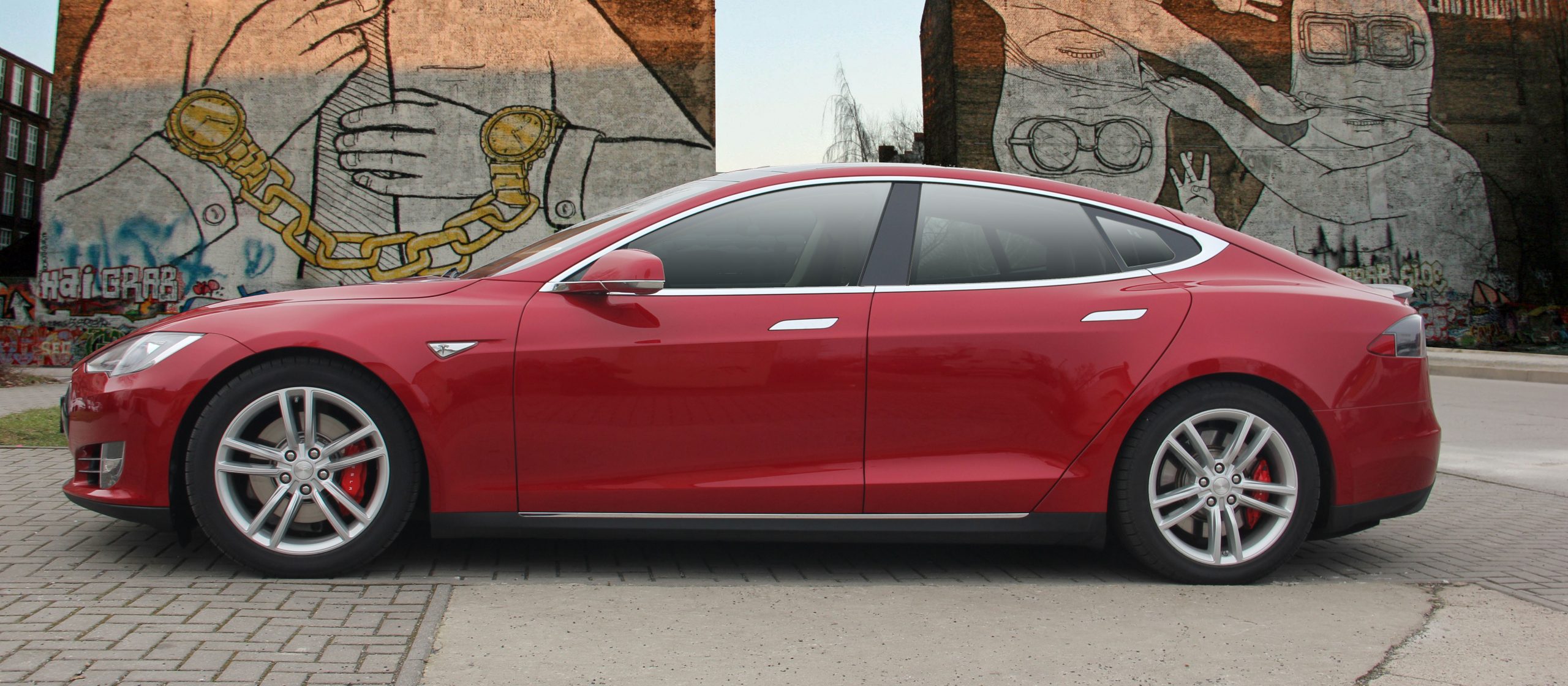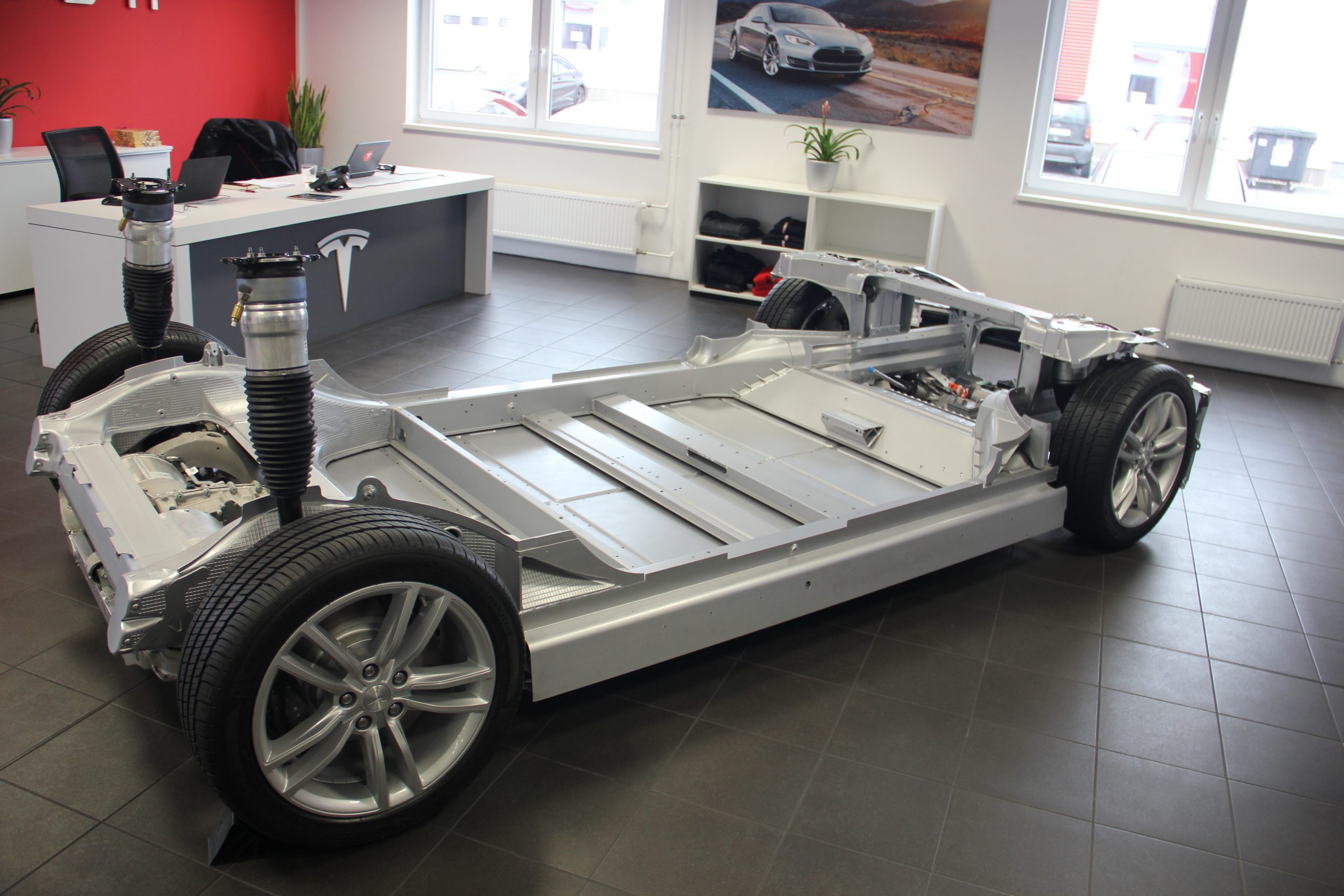by Roger Menendez Otero
March 1st, 2015
Who he might like an electric vehicle with a 17-inch touch screen as a dashboard? You’d think a computer geek or an executive of a start up. And indeed, at least partly so. However, one of the most curious sales that are remembered in the Tesla store in Brussels, is the one made to an old man of almost 80 springs, who showed up at the store, asking if there had the car of the future, as he had heard. The man said, he did not know if his health would allow him to continue driving for a long time and so he wanted to drive already the car of the future. In this way, Tesla has been adding followers outside the niche market that is a priori could be assumed to an electric vehicle.
The CEO of Tesla Motors, Elon Musk, known for being the co-founder of PayPal and SpaceX, has been breaking all topics until, 115 years after Jenatzy broke the barrier of 100 km/h with his car electric «La jamais Contente», not only is again talk of electric vehicles but even has become an object of desire.
So far it seemed to be a unwritten rule whereby an electric vehicle should be ugly, boring and pretty useless, as well as expensive. Well, starting from the end, the Tesla S, is indeed expensive. In particular between 70,000 € and 110,000 € for the most reasonable options. If you can call it reasonable for a machine nearly 700 horsepower, of course. In a matter of aesthetics there is nothing written although it can agree at least that is a harmonious, discreet and very aerodynamic sedan.
In terms of habitability they begin surprises if hybrid vehicles much of the trunk disappeared to locate the batteries in the Tesla S no trace of them (they are in the underbody lowering the center of gravity and improving the distribution of masses).The trunk has a dimension that can enable it, optionally, two additional children’s seats in the march reverse direction, to accommodate a total of 7 passengers in a sports car! On the front of the vehicle; where usually one expects to find the combustion engine, it has enabled one second trunk of considerable size.
In terms of performance, the powers between 385 and 691CV with a unique relationship, provide an absolutely spectacular acceleration in the absence of gearbox is unexpectedly linear. So surprising that some users seek to measure the acceleration of its Tesla S in «g» rather than seconds. Specifically the P85D model approximates a «g» acceleration, that is, almost the same to undergo a free fall. And saving the amusement park.
The mechanical section that occupies much of the description of high – performance vehicles, Tesla is different: basically no. And Tesla likes to flaunt it on the bare showing vehicle platform everything there. Mechanical engineering so present in combustion vehicles, Tesla is practically reduced to a small electric motor on the rear axle, like, pardon, to a washing machine (in some models is complemented by a second motor on the front axle to provide the vehicle all – wheel drive).
But all this would not be an expensive toy, if not enter into play two disruptive technologies that threaten to upend the automotive sector: the batteries and the incorporation of information technology and telecommunications. The advances in the development of lithium-ion batteries for all types of electronic devices in recent years has been spectacular ( we all remember the limited autonomy of the first mobile phones and memory effect of nickel – cadmium batteries those).The next logical step in the development of this technology is the application to other energy – demanding that uses small devices. In the case of Tesla materializes in a range that can reach, under very favorable circumstances, it must be said, a range of between 400 and 500km.Regarding the difficulties to recharge the vehicles especially on long journeys, Tesla has taken the bull by the horns: directly extending its own charging points throughout North America, Europe and China, with fast chargers that recharge a range of 250 km in 20 minutes.
The second disruptive technology is the emergence of ICT in the automotive sector. By now you probably guessed that the Tesla factory is not in Detroit or Munich but in the very Silicon Valley in California. It is true that any current car and incorporates a considerable amount of electronics for brake assist, engine control, stability, navigation, etc. But what Tesla proposed goes far beyond. The feeling behind the wheel of a Tesla is to be permanently connected: through the center console can consult a map, book a restaurant, listen to any radio station in the world, while vehicle applications are updated automatically the just as they would in our smartphones. One of the latest updates, increased power and reduced car battery discharge is stopped and all remotely, without going to the workshop. Another benefit newly incorporated in the latest model is the ability of autonomous driving system supported by a quadruple visual recognition, radar, ultrasound and satellite. Apart from the adaptive interaction and surrounding traffic signals, the vehicle parked accommodates only (restricted by private property legal issues) or picked up at the door of his house at a scheduled time.
The 50,000 cars sold in the past two years can be considered a given type of vehicle that is successful and its price, particularly since it involves a new manufacturer with just over 10 years old. Although the company has not yet managed to get into profit, the value of its shares has increased sixfold in the past two years to reach a market capitalization of almost 24,000 million euros, almost half of the value of General Motors. Elon Musk is still much work ahead if he will not succumb in a market dominated by giants. And that is precisely what you want to make the first «start up» of the car; judging from the battery factory building in Reno (Nevada) along with Japanese Panasonic with a planned to produce 500,000 batteries per year capacity.
Tesla has so far proved possible to design and build an electric vehicle that arouses the interest of so- called «early adopters» willing to pay a large sum of money for a very exclusive product. The challenge now is to see if they are able to convert the experiment has so far been Tesla, in a consumer product available to the general public. And the way in which Tesla aims to sell cars can be summed up in one name: Apple. No wonder the business expansion strategy of both companies ran the hand of the same person and it shows. Tesla has opted for direct sales through small own exhibitions in the center of large cities; renouncing dealers. The price of the car is advertised in the rate, without negotiation possible and promotes direct purchase through the web. And customer loyalty to the brand is much more intense than in a traditional car thanks to this connectivity and additional services that the firm provides.
So, it is not surprising that in mid-February startled the media the news that Apple has embarked on a project automotive , allegedly after failing the attempt to purchase or collaboration with Tesla own early 2014. At the end of the day, if the path that Tesla has opened consolidates, future cars will have more in common with a tablet than with our beloved Seat 600.
(Originally published in 12 Spanish newspapers of Grupo Vocento in March 1st, 2015)



Deja una respuesta
Lo siento, debes estar conectado para publicar un comentario.